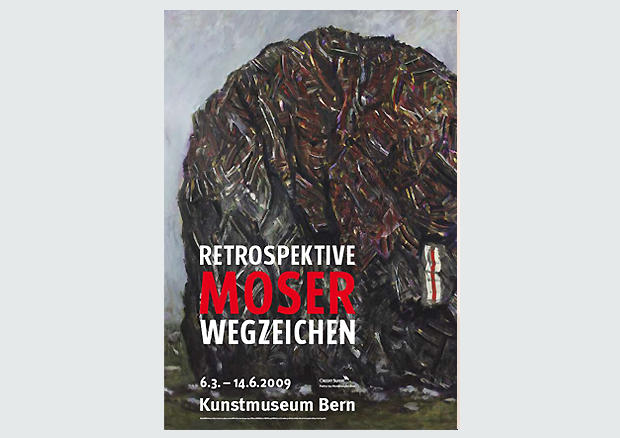Swiss Artist of the Postwar Avant-Garde
Milestones – A Retrospective
Wilfrid Moser (1914 – 1997) has exerted a strong influence on the development of European painting since the 1930s. His work is marked by a turbulent expressivity and the existential themes of his times. The exhibition presents an overview of Moser’s multifaceted work including paintings, assemblages, sculptures and works on paper which bear witness to Moser being a uniquely unconventional artist of the postwar period.
Directly after the Second World War, the artist, who
was born and grew up in Zurich, settled in Paris, at that time the art
metropolis of Europe. There he became one of the leading representatives of the postwar avant-garde.
Intensity of Feeling and Expression
Moser’s impressions of the great city of Paris became the basic motifs that run throughout his entire work: the street
canyons, the open houses, the butcher shops and the metro are recurring
motifs in his creative output. Moser combined these everyday subjects
with his mythological interpretation of the world. He processed his
intense impressions and sensations with a similarly intense expression:
his work is marked by an impetuous expressivity. Always, Moser addressed the basic conflicts of the respective contemporary period. Thus, his
art reflects the times of change as well as the sombre mood of his
times.
Between Realism and Abstraction
Moser can not be fitted into a fixed artistic groove. His work underwent various stylistic changes and breaks. Thus he was
always alternating between realistic and abstract art. He did not
restrict himself to painting. From the big-city Paris pictures, which
have shreds of collage intermingled in them, he developed red-and-white
striped synthetic resin sculptures as walk-in pictures which represent
an innovation in the sculpture of the twentieth century. During the era
of concept art in the 1970s, Moser also challenged painting with his
grey-toned mountain landscapes, adding a new chapter to the mountain
theme in Swiss art after Hodler and Kirchner. Again, in the 1980s, an
expressive, gestural painting emerged from the impenetrable branches of
the thicket pictures. His later large-format pastels combine all his
themes and represent the culmination of his impressive work, an oeuvre
in which the various epochs are combined through the underlying current
of expressivity.
The exhibition is founded on the legacy of the artist, from his studios in Paris, Ronco and Zurich, brought together and academically processed by the Wilfrid Moser Foundation, founded in 2005. The exhibition includes hitherto unknown works and comprises 120 paintings, 20 assemblages and sculptures, the sketchbooks and works on paper.


